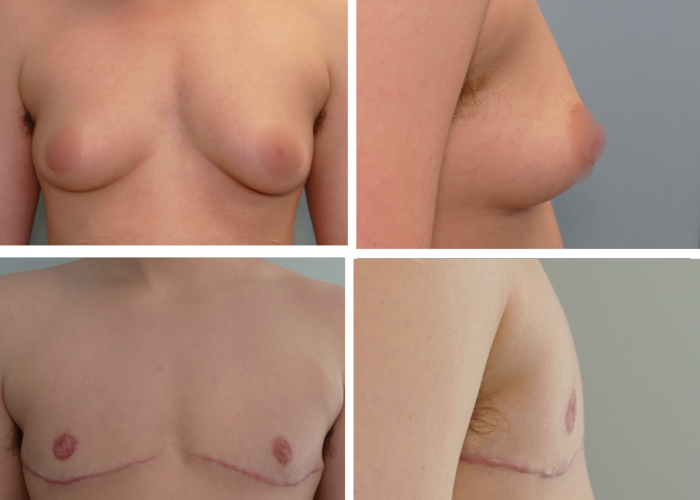At Oregon Cosmetic and Reconstructive Clinic (OCRC), we are proud to offer chest masculinization and gender-neutral top surgery to individuals seeking gender-affirming care. Performed exclusively by Dr. Tina Jenq, a board-certified plastic surgeon, this procedure helps patients achieve a flatter, more traditionally masculine or androgynous chest contour. Located in Portland, Oregon, OCRC proudly serves the greater metro area, including Lake Oswego, Clackamas, Gresham, West Linn, and surrounding communities.
What is Chest Masculinization or Gender-Neutral Top Surgery?
Chest Masculinization Surgery is a gender-affirming procedure that involves the removal of breast tissue to address gender dysphoria. Usually it involves repositioning or resizing of the nipples and areolas to create a natural-looking, flat or slightly contoured chest. This procedure can involve double incision mastectomy, subcutaneous mastectomy, or periareolar (keyhole) mastectomy, based upon your body type and goals.
Benefits of Chest Masculinization Surgery
- Masculine Chest Contour – Achieve a flat, sculpted chest.
- Improved Comfort & Confidence – Feel more aligned with your gender identity.
- Customized Surgical Techniques – Choose the best approach for your anatomy and goals.
- Expert Surgical Care – Dr. Tina Jenq performs quilting sutures to obviate the need for drains, which generally cause more pain and swelling
Our Approach to Chest Masculinization Surgery
Dr. Tina Jenq brings years of surgical experience and a compassionate, patient-focused approach to every procedure. She works closely with each individual to understand their identity, goals, and desired outcomes. Thereby creating ensuring a surgical plan tailored to their needs. Whether you are seeking a fully masculinized chest appearance or a more gender-neutral contour, Dr. Jenq will guide you through the entire journey—from consultation to recovery.
Depending on your body and goals, Dr. Jenq may recommend:
- Double Incision Mastectomy – Ideal for patients with larger chests; includes nipple grafting.
- Peri-Areolar or Keyhole Incision – Suited for smaller chests; less scarring and faster recovery.
- Gender Neutral Techniques – Customized to maintain some chest volume or a softer contour if desired.
Who is a Good Candidate for Chest Masculinization Surgery?
You may be an ideal candidate if you:
- Are a transgender man or non-binary individual seeking a flatter, more masculine chest.
- Have been on hormone replacement therapy (optional).
- Are in good overall health and have realistic expectations about the procedure.
- Want to reduce chest dysphoria and improve confidence.
Why Choose Oregon Cosmetic and Reconstructive Clinic?
- Experienced and Compassionate Surgeon – Dr. Tina Jenq specializes in top surgery and gender-affirming procedures.
- State-of-the-Art Facilities – We use the latest techniques to ensure the best results.
- Inclusive, Welcoming Environment – Our clinic is committed to serving the LGBTQ+ community with respect and dignity.
- Gender-Affirming Focus – We understand the deeply personal nature of gender-affirming care and treat every patient as an individual.
- Serving the Greater Portland Area – Conveniently located in East Portland for patients in Happy Valley, Lake Oswego, Clackamas, Gresham, West Linn, and beyond.
Schedule Your Consultation Today
If you’re considering chest masculinization or gender-neutral top surgery in Portland, OR, trust Dr. Tina Jenq at Oregon Cosmetic and Reconstructive Clinic. Contact us today to schedule your confidential consultation and take the next step in your gender-affirming journey.









